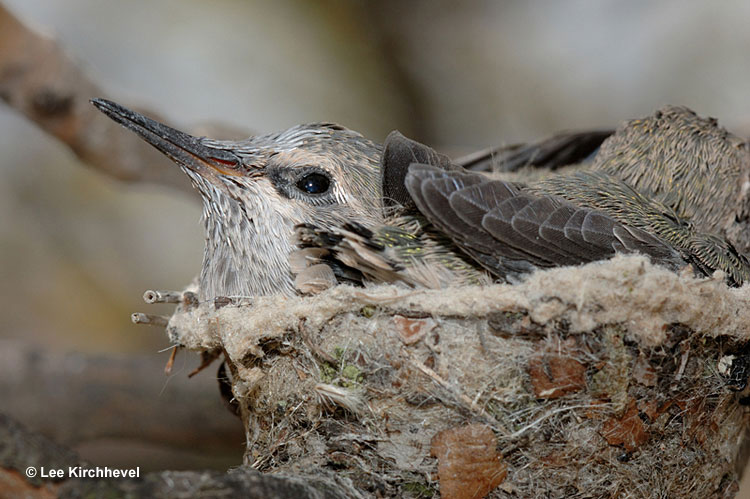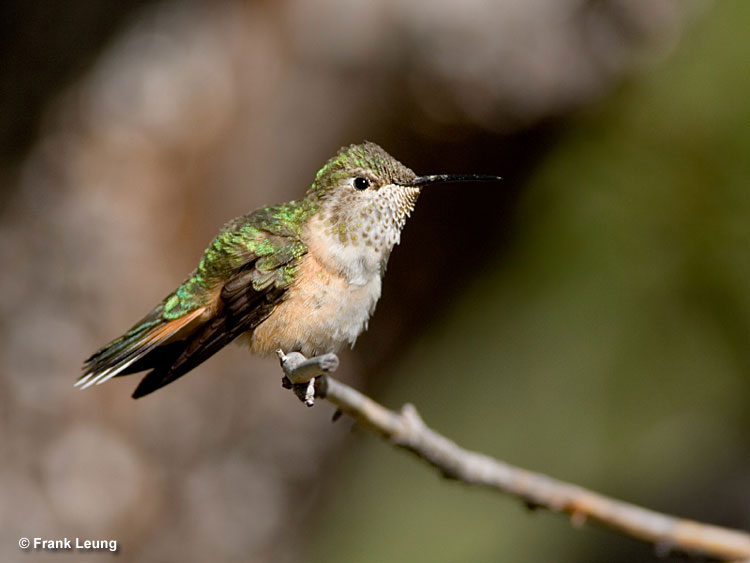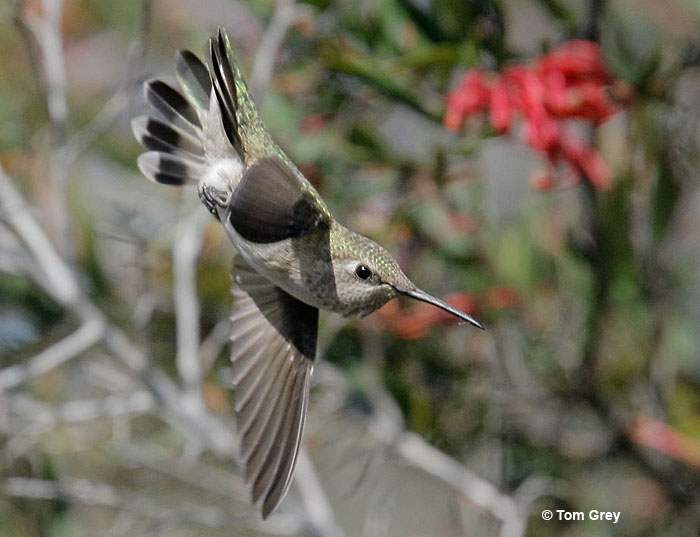
Where do hummingbirds sleep? That’s a good question! I can see several coming to my feeder but then I don’t see any of them sleeping in my yard. I always wondered if they just hide really well.
As it turns out, hummingbirds do hide but they are also just small and inconspicuous birds. Compared to other birds, they also sleep differently, especially during cool weather.
How do hummingbirds sleep? See this article for answers and more about hummingbird sleeping habits!
On this page
Where Do Hummingbirds Sleep?
It can be hard to find sleeping hummingbirds because they are so small, and because they tend to sleep in sheltered spots. When a hummingbird looks for a good place to spend the night, the bird has to find a spot that will protect it from danger. Although they do need to pick spots that protect them from nocturnal predators, the elements pose the biggest threats.

In order to sleep, hummingbirds must find a suitable spot.
Since hummingbirds have such high metabolism and are so small, they can be very much susceptible to cold weather, rain, and wind. With that in mind, the Ruby-throated Hummingbird and all other hummingbird species tend to sleep on thin twigs in dense vegetation.
Related: Where do birds go at night?
They perch on a small twig because the shaking of the twig makes it easier to detect a predator that might be getting too close. Hummingbirds pick a spot with dense vegetation, often sheltered, because these factors help protect the bird from energy-sapping elements.
In the high Andes, some hummingbirds might also sleep and seek shelter in small caves or other crevices in rocks. No matter where hummingbirds occur, while breeding, females also sleep right on their nests. However, whether during migration or on breeding or wintering grounds, all hummingbirds sleep in dense vegetation or other sheltered spots.
How Do Hummingbirds Sleep
Hummingbirds sleep like most songbirds. After picking a good spot to spend the night, they perch on a narrow twig and tightly clutch it with their small feet. The bird then fluffs up its feathers and settles down for the night.
Unlike other birds that rest their heads on their backs, hummingbirds lower their neck and sleep with their beak pointed upwards. They pass the night in the same position and don’t move until morning.
With that in mind, hummingbirds sleep for 8 to 10 hours but sometimes sleep for 12 hours! Once in a while, they also sleep a bit during the day. When they awake, the birds fluff their feathers and shiver so they can warm up.
On occasion, hummingbirds also sleep upside down! Although some folks believe hummingbirds always sleep upside down, this isn’t true. It can be hard to study the sleeping habits of hummingbirds, but according to researchers, hummingbirds sleep right side up, with their feet tightly gripped onto a small branch.
Hummingbirds occasionally end up sleeping upside down when they perch on a smooth branch. During the night, the bird’s feet slip but they still clutch the branch. The hummingbird ends up sleeping upside down but doesn’t awake until morning.
What Is Torpor?
Hummingbirds have such high metabolism, they have to feed every ten or fifteen minutes. If they don’t get enough food, these little feathered dynamos can fall into a coma and die! However, there’s one big problem with that necessity; hummingbirds don’t feed at night.
Related: How to attract hummingbirds?
Since hummingbirds need to eat most of the time, how do hummingbirds sleep? The answer is called torpor.
Torpor is when a hummingbird (or other animal) lowers its body temperature and heart rate. Basically, to avoid having to eat, hummingbirds reduce the need for food by lowering their overall metabolic rate.
All hummingbirds probably enter torpor for most of the night, even in tropical places. On cool nights, hummingbirds also enter torpor to survive low temperatures. They can be in this limited form of hibernation for several hours but can’t stay like that forever!

Some hummingbirds stay longer than others, so seeing one in torpor is not as rare as you would think.
If it gets too cold, or a hummingbird doesn’t eat enough during the day, it might enter torpor and never wake up. However, after 8 or so hours, most hummingbirds leave torpor and slowly wake back up.
This can take several minutes as the bird fluffs its feathers and stretches its wings. Once its metabolism comes back to its usual high rate, the hummingbird ventures forth for some much needed breakfast.
Interesting Facts About Hummingbirds & Sleep
- During torpor, hummingbirds can conserve 60 to 90 percent of their energy! This ability helps them survive the night and be ready to feed as soon as they wake up in the morning.
- If you find a sleeping hummingbird, even in the day, don’t touch it. Although the bird might seem to be dead or in trouble, it is probably in torpor and is deeply asleep.
- Hummingbirds do not sleep in birdhouses, even small ones. Although it might seem like a good place to sleep, these small birds prefer to spend the night on a small twig, in dense vegetation.
- Hummingbird species sleep alone. Unlike some other bird species, they do not form flocks. Each individual hummingbird always picks its own, separate spot for sleeping.
- These small birds do not sleep with their eyes open. They always sleep with their eyes tightly closed. If you see a perched hummingbird with its eyes open, it’s awake and is probably getting ready to fly.
- A hummingbird flying around at night is probably a migrating bird. If it is attracted to your lights, turn them off so the hummingbird can reorient itself and continue migrating. If not, it could fly into the light or a window and injure itself.
- Hummingbirds can sleep upside down, kind of like bats! However, they usually sleep perched right side up.
Frequently Asked Questions
Do hummingbirds sleep all night?
Yes, hummingbirds typically sleep all night long.
How can you tell if a hummingbird is sleeping?
You can tell if a hummingbird is sleeping if it is tucked onto a perch, has its eyes closed, and its bill pointed up. It is also sleeping if it is upside down.
Do hummingbirds sleep in the same place every night?
Not always. Although hummingbirds can sleep in the same place every night, they can also rotate between other favored spots.
Where do hummingbirds nest?
Hummingbirds nest in bushes and trees, often near streams. They can also nest on wires and inside sheds.
Read next: Hummingbird Facts

